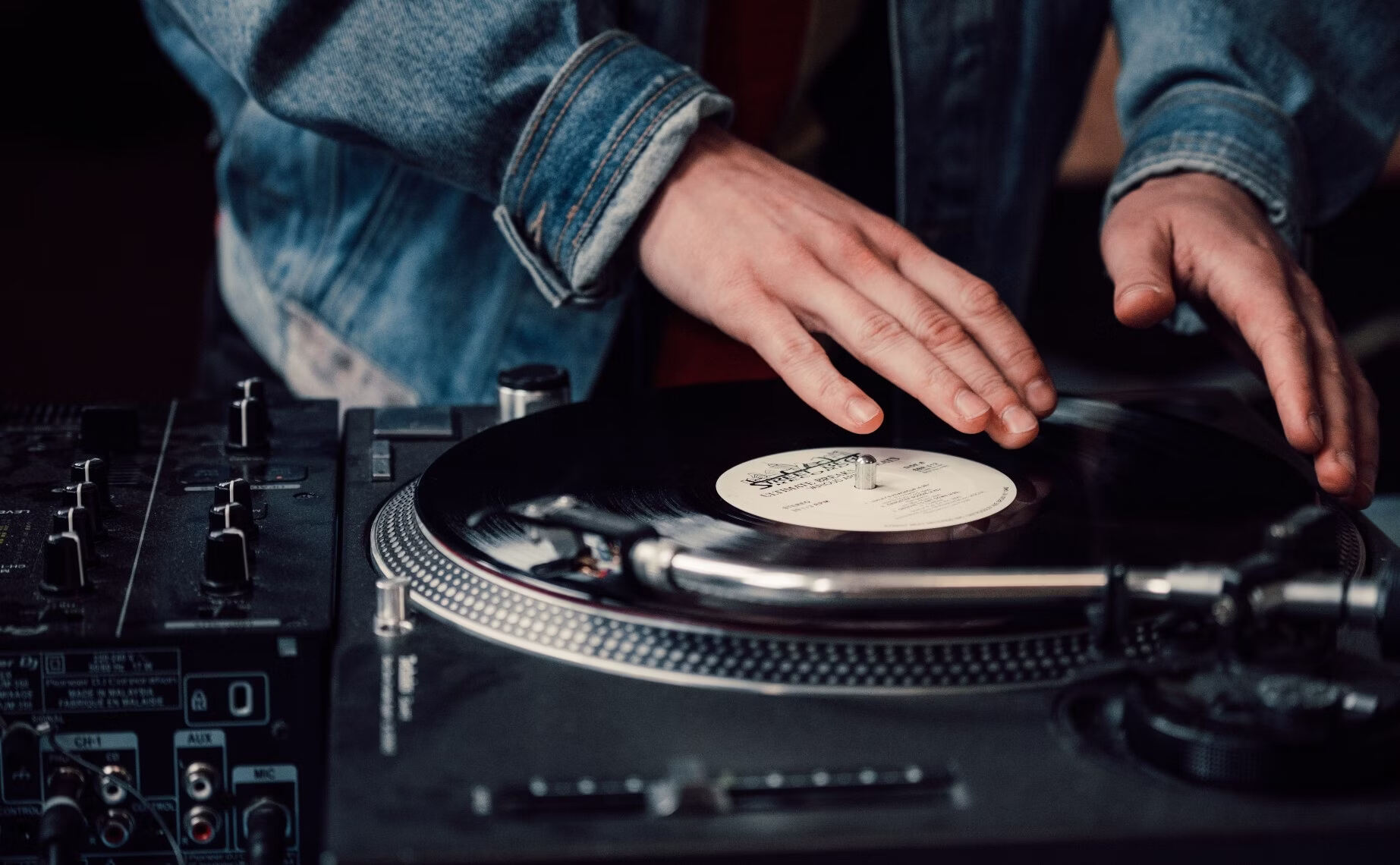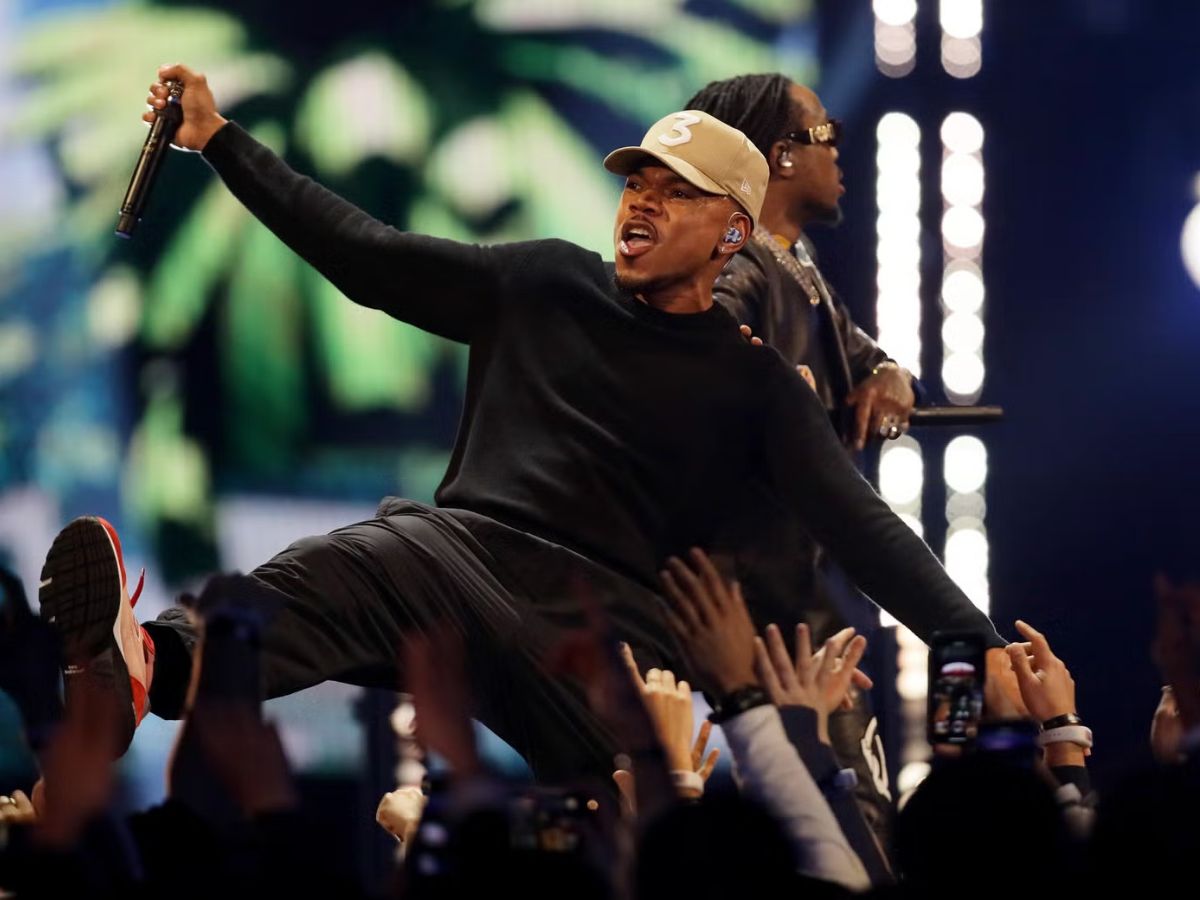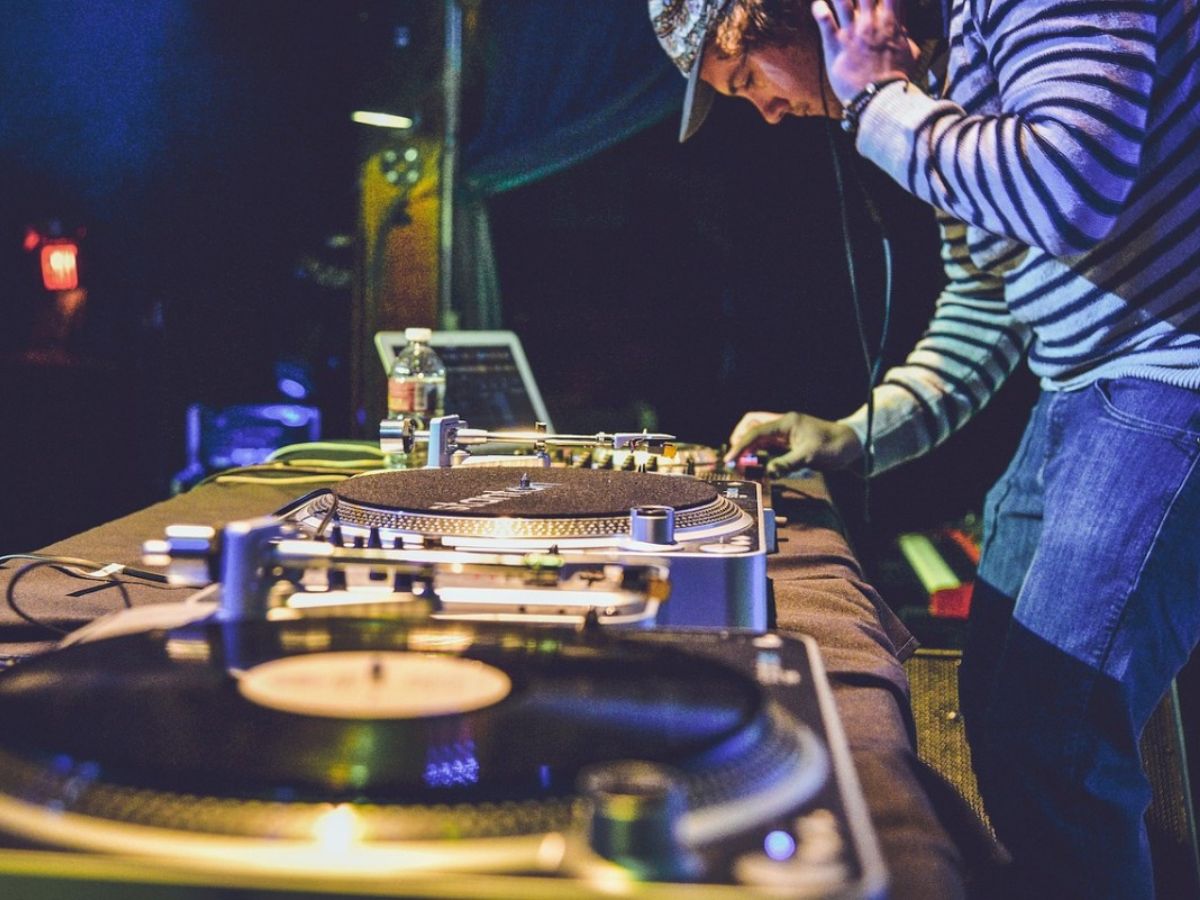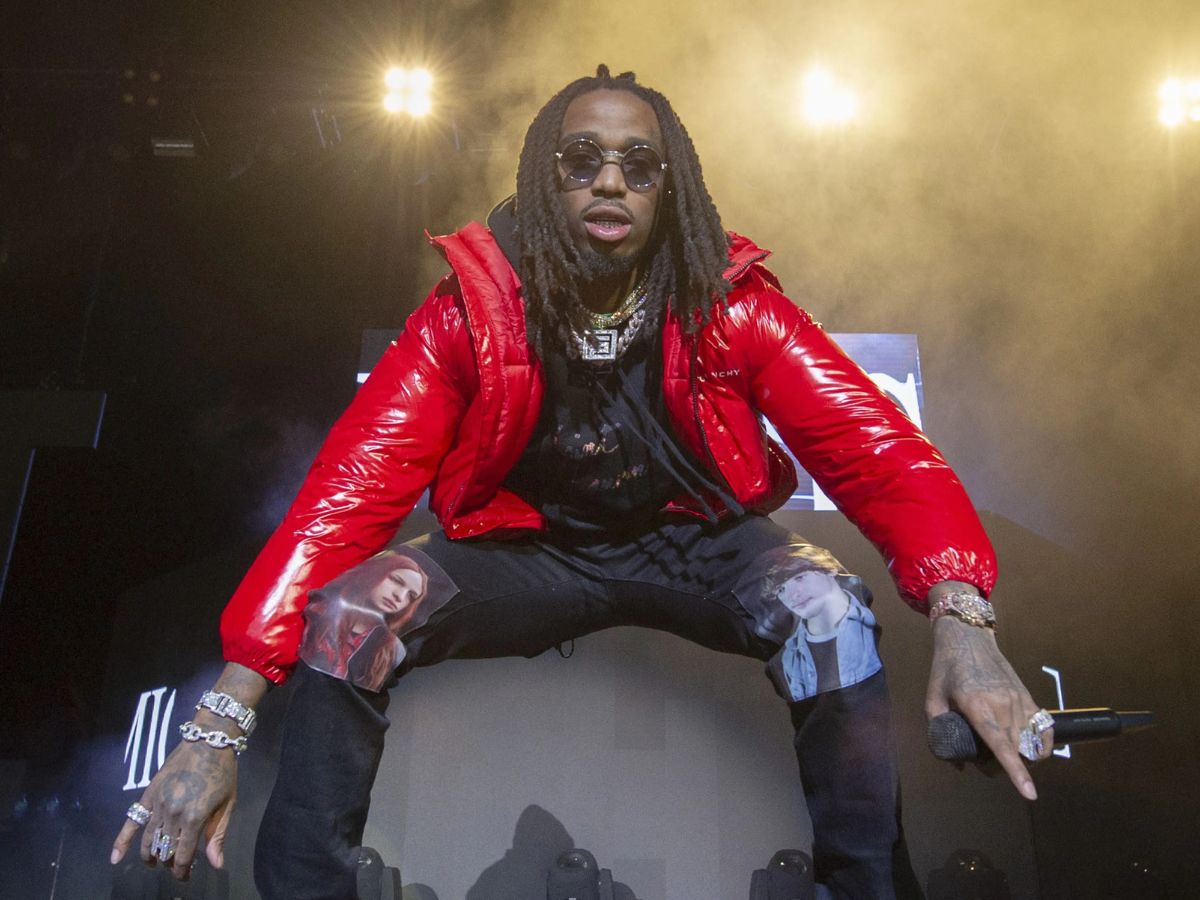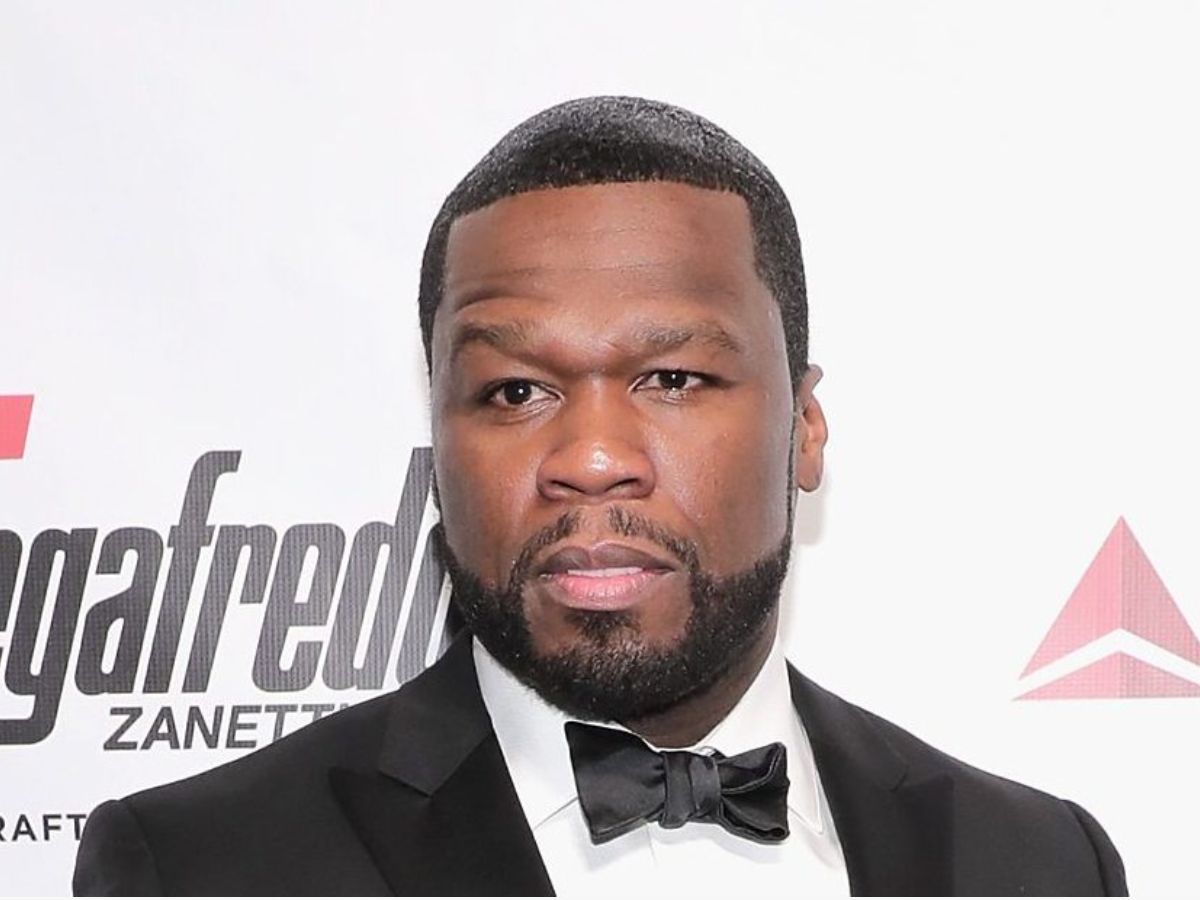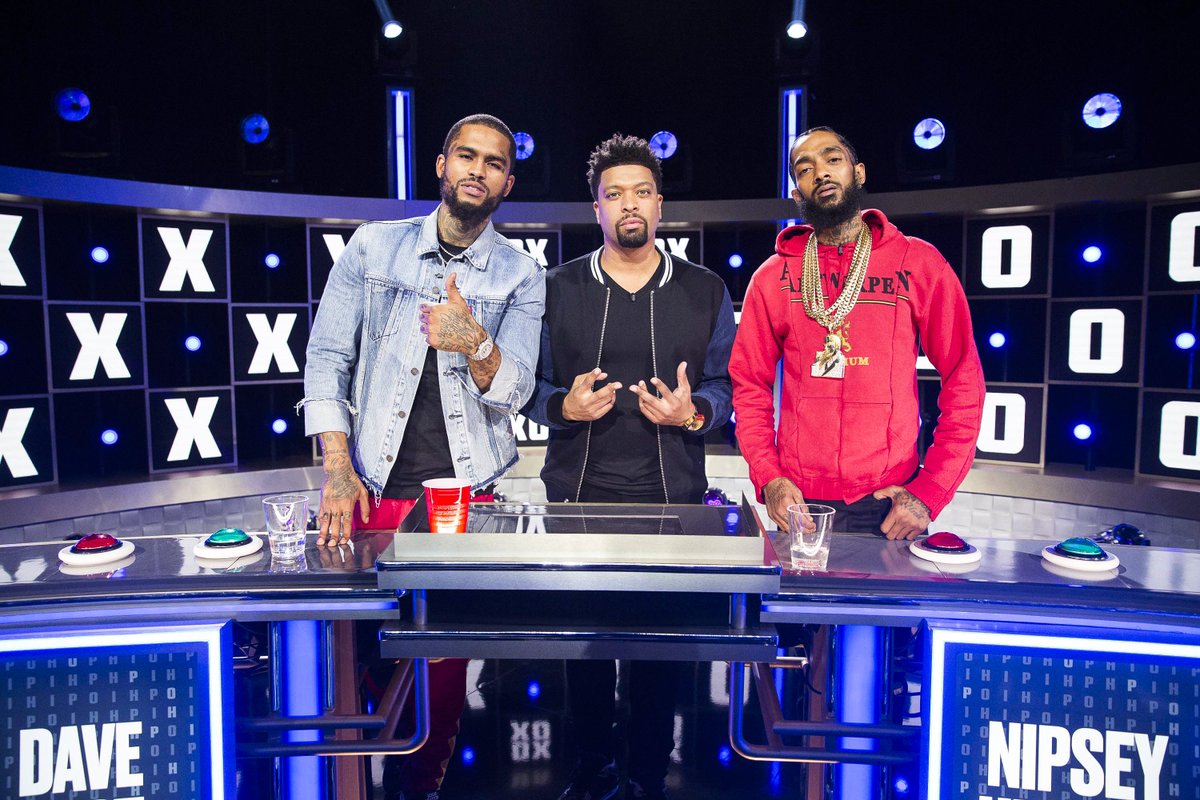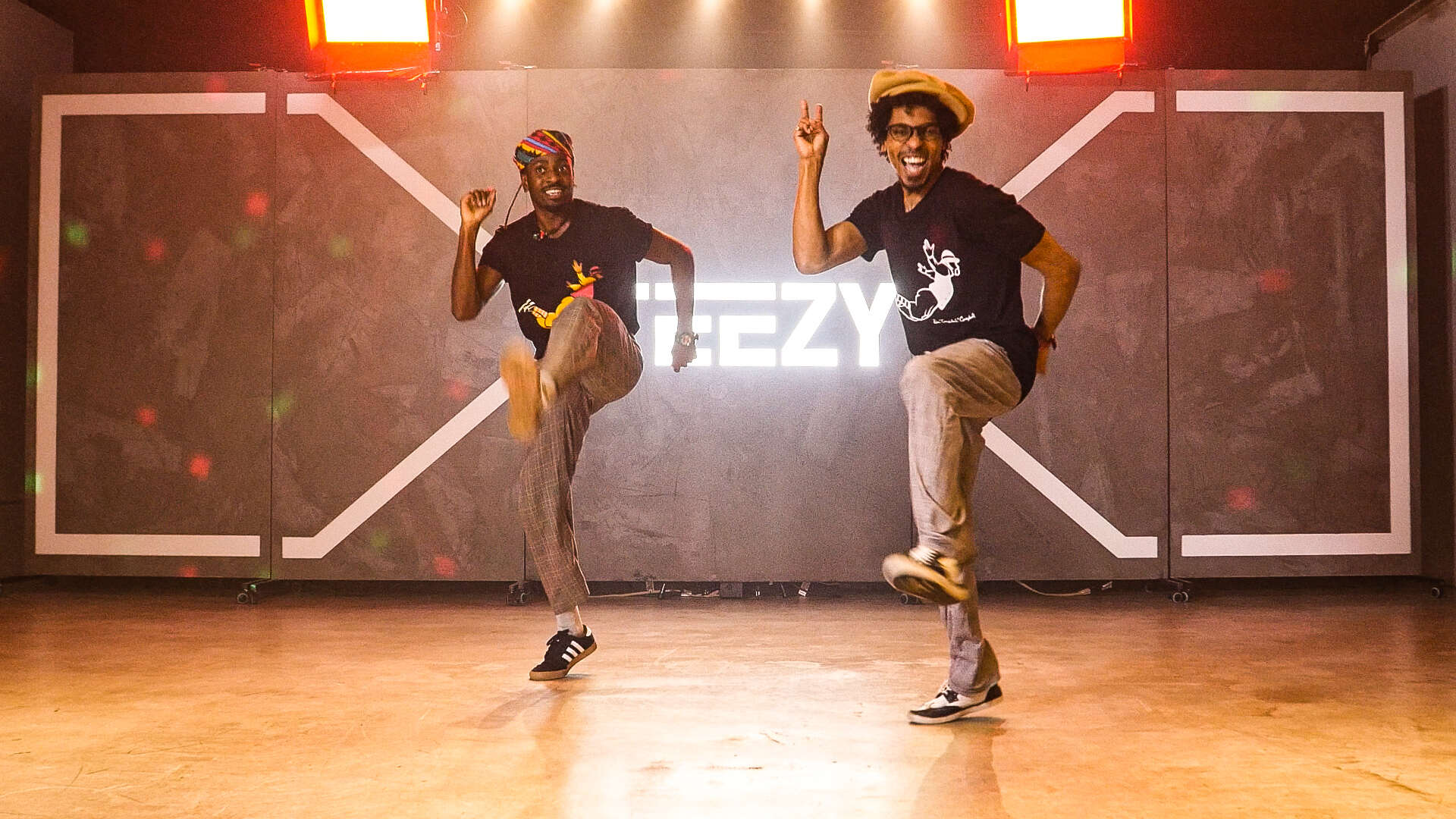

Hip Hop
What Is Hip Hop Poetry
Published: November 2, 2023
Discover the power of Hip Hop poetry and its impact on culture. Explore the origins, techniques, and evolution of this unique form of expression.
(Many of the links in this article redirect to a specific reviewed product. Your purchase of these products through affiliate links helps to generate commission for AudioLover.com, at no extra cost. Learn more)
Table of Contents
Introduction
Welcome to the world of Hip Hop poetry, where the power of words and rhythm collide. Hip Hop has long been recognized as a cultural movement, but it also encompasses a rich tradition of lyrical expression known as Hip Hop poetry. This unique art form combines the elements of spoken word, rap, and poetry to deliver thought-provoking messages and narratives that resonate with people from all walks of life.
Hip Hop poetry emerged in the 1970s in the streets of the Bronx, New York, as an outlet for self-expression, storytelling, and social commentary. It provided a platform for marginalized communities to voice their experiences and challenges, addressing social and political issues with an unfiltered and direct approach.
What sets Hip Hop poetry apart from traditional poetry is its connection to music and the urban lifestyle. Each verse is delivered with a distinct cadence and rhythm, often accompanied by beats and instrumentals that serve as the backbone of the composition. This fusion of poetry and music creates a dynamic and captivating experience, bringing the words to life and engaging the listener in a powerful way.
Hip Hop poetry explores a wide range of themes, including social justice, personal experiences, relationships, cultural identity, and the human condition. It serves as a vehicle for individuals to express their emotions, highlight societal issues, share their stories, and challenge the status quo.
In this article, we will delve deeper into the world of Hip Hop poetry, exploring its origins, characteristics, techniques, themes, and its impact on society. We will also address some of the criticisms the genre has faced and discuss its future in the ever-evolving landscape of art and culture.
So, sit back, relax, and prepare to embark on a lyrical journey that celebrates the power of words and the artistry of Hip Hop poetry.
Definition of Hip Hop Poetry
Hip Hop poetry can be described as a form of artistic expression that combines elements of poetry, rap, and spoken word to convey powerful messages and narratives. It is a unique blend of rhythmic language, wordplay, storytelling, and social commentary that stands at the intersection of music and poetry.
This art form emerged as a response to the social and political realities faced by African American and Latino communities in the Bronx during the 1970s. It provided a platform for marginalized voices to express their experiences, frustrations, and aspirations in a raw and unfiltered manner.
At its core, Hip Hop poetry emphasizes the importance of lyrical prowess and the ability to connect with an audience through words. It embraces the oral tradition and the power of spoken language, using rhythm, rhyme, and wordplay to captivate listeners and deliver thought-provoking messages.
Unlike traditional poetry, which may often rely on written form, Hip Hop poetry is primarily designed to be performed. Artists use various vocal techniques, such as flow, delivery, and vocal inflections, to enhance the impact of their words. The delivery style may vary from artist to artist, ranging from fiery and intense to more laid-back and introspective.
One of the defining characteristics of Hip Hop poetry is its close connection to music. The words are intricately woven into beats, instrumentals, and melodies, creating a harmonious fusion that elevates the poetic expression. The rhythm and cadence of the words align with the musical accompaniment, resulting in a dynamic and engaging experience for the listener.
Furthermore, Hip Hop poetry often encompasses a unique lexicon and cultural references that reflect the experiences and vernacular of the communities from which it originated. It is a form of storytelling that speaks to the urban lifestyle, addressing issues such as social injustice, inequality, poverty, identity, and personal struggles.
Ultimately, Hip Hop poetry serves as a powerful tool for self-expression, empowerment, and communication. It allows individuals to give voice to their truths, share their stories, and connect with others on a deeply personal and emotional level. It is a genre that continues to evolve and push boundaries, challenging societal norms and creating a space for marginalized voices to be heard.
Origins of Hip Hop Poetry
The origins of Hip Hop poetry can be traced back to the streets of the Bronx, New York, in the 1970s. It emerged as part of a larger cultural movement known as Hip Hop, which encompassed various elements such as DJing, breakdancing, graffiti art, and of course, rap music.
During this time, the Bronx was facing numerous challenges, including high poverty rates, crime, and social inequality. It was within this backdrop that Hip Hop poetry began to take shape as a means for individuals to express their frustrations, tell their stories, and shed light on the realities of their communities.
Many credit figures such as The Last Poets and Gil Scott-Heron as early pioneers who laid the foundation for Hip Hop poetry. Their spoken word performances and socially conscious lyrics heavily influenced the emerging artists within the Hip Hop community.
In addition, the block parties that were organized by DJs, such as DJ Kool Herc, played a significant role in the development of Hip Hop culture and the integration of poetry within the music. DJs would play instrumental breaks in songs, allowing MCs (or emcees) to freestyle and recite poems over the beats.
This improvisational aspect became a key element of Hip Hop poetry, as artists would engage in rap battles and lyrical exchanges, showcasing their lyrical skill and creativity. The competitive nature of these battles further pushed artists to refine their poetic techniques and deliver captivating performances.
As the Hip Hop movement gained traction and popularity, artists like Grandmaster Flash, Afrika Bambaataa, and KRS-One continued to shape and expand the art of Hip Hop poetry. They used their platforms to address social issues, cultural identity, and personal experiences, paving the way for the next generation of poets and MCs.
Over time, Hip Hop poetry became not only a form of self-expression but also a powerful tool for advocacy and social change. It allowed communities to reclaim their narratives, challenge stereotypes, and shed light on the realities of their lives. Through the poetic word, individuals found empowerment, unity, and a means to connect with others who shared similar experiences.
Today, the origins of Hip Hop poetry continue to resonate within the genre. Artists draw inspiration from the past while injecting their own unique styles and perspectives, keeping the art form fresh and relevant in the ever-evolving landscape of Hip Hop culture.
Characteristics of Hip Hop Poetry
Hip Hop poetry possesses several distinct characteristics that define its unique style and set it apart from other forms of poetry. These characteristics contribute to the powerful impact and appeal of Hip Hop poetry among both artists and audiences.
1. Rhythm and Flow: Central to Hip Hop poetry is its emphasis on rhythm and flow. Each line of verse is intricately crafted to fit within the beats and musical structure, creating a seamless fusion of words and music. The rhythmic patterns, syncopation, and varying cadences contribute to the infectious and captivating nature of Hip Hop poetry.
2. Lyrical Prowess: Hip Hop poetry places a strong emphasis on wordplay, metaphors, similes, and clever usage of language. Artists showcase their lyrical prowess by skillfully crafting impactful verses that engage and entertain listeners. The ability to weave together words and create memorable lines is a hallmark of Hip Hop poetry.
3. Social Commentary: Hip Hop poetry has always been deeply rooted in social consciousness and commentary. Artists use their lyrics to address social and political issues, expose injustices, and challenge the status quo. Through their words, they shed light on the everyday struggles faced by marginalized communities, serving as a voice for the voiceless.
4. Personal and Authentic Expression: Hip Hop poetry provides a platform for artists to share their personal stories, experiences, and emotions. It encourages authenticity and self-expression, allowing artists to cultivate a deep connection with their audience. By being vulnerable and genuine, artists can tap into universal emotions and create meaningful connections through their art.
5. Multi-Dimensional Storytelling: Hip Hop poets are skilled storytellers who use vivid imagery and narrative techniques to paint a picture and transport listeners into their world. They often draw from their own experiences or observations, delivering stories that explore themes of love, loss, triumph, and resilience.
6. Cultural Relevance: Hip Hop poetry reflects the cultural context from which it arises. Artists incorporate cultural references, slang, and vernacular that resonate with their communities and provide a sense of authenticity. Through these references, artists celebrate their cultural heritage and affirm their identities.
7. Engagement and Performance: Hip Hop poetry is not limited to the written page; it is meant to be performed. Artists engage with their audience through energetic performances, captivating stage presence, and dynamic delivery. The live element adds another layer of excitement and connection to the art form.
These characteristics collectively contribute to the powerful impact and popularity of Hip Hop poetry. By blending rhythm, storytelling, and social commentary, Hip Hop poets create a unique form of expression that resonates with individuals around the world.
Techniques Used in Hip Hop Poetry
Hip Hop poetry is a skillful combination of poetic techniques and musicality. Artists employ a variety of techniques to enhance the impact of their verses and create a memorable listening experience. These techniques contribute to the unique style and artistry of Hip Hop poetry.
1. Wordplay: One of the most recognizable aspects of Hip Hop poetry is the clever use of wordplay. Artists utilize techniques such as rhyming, alliteration, assonance, and puns to create memorable lines and lyrical gymnastics. The inventive manipulation of words adds depth and complexity to their verses.
2. Metaphors and Similes: Metaphors and similes are powerful tools in Hip Hop poetry. Artists use vivid comparisons to create striking imagery and communicate complex ideas. Metaphors allow for abstract concepts to be expressed in a tangible way, while similes draw parallels between unrelated elements.
3. Syllable Count and Flow: Mastering syllable count and flow is essential in Hip Hop poetry. Artists carefully craft their verses to fit within the beats and rhythms seamlessly. They experiment with different patterns, change in tempo, and syncopation to create a dynamic and engaging flow that keeps listeners hooked.
4. Repetition: Repetition is a powerful technique used in Hip Hop poetry to reinforce ideas and create emphasis. Artists may repeat certain words, phrases, or lines to create a catchy hook or drive home a particular message. Repetition adds a rhythmic and hypnotic quality to the poetry.
5. Cadence and Delivery: Cadence and delivery are crucial in Hip Hop poetry. Artists focus on the musicality of their verses, finding the right rhythm, and delivering their words with precision and conviction. The way in which the words are delivered, including emphasis, pauses, and vocal inflections, contributes to the overall impact of the performance.
6. Double Entendre: Hip Hop poetry often incorporates double entendre, where a line or phrase has multiple meanings. This clever wordplay adds depth and layers of interpretation to the lyrics. It allows artists to convey deeper messages that can be understood on both a surface level and a more profound, metaphorical level.
7. Storytelling: Storytelling is a fundamental aspect of Hip Hop poetry. Artists skillfully weave narratives, sharing personal experiences or illustrating social issues through vivid storytelling techniques. The ability to captivate the audience and transport them into the world of the story is a hallmark of accomplished Hip Hop poets.
These techniques, among others, contribute to the richness and versatility of Hip Hop poetry. Artists use their creativity and mastery of these techniques to create impactful verses that resonate with listeners and leave a lasting impression.
Themes and Subjects in Hip Hop Poetry
Hip Hop poetry delves into a wide range of themes and subjects, exploring topics that reflect the experiences, struggles, and aspirations of the artists and their communities. These themes provide a voice for the marginalized and address societal issues with an unapologetic and honest perspective.
1. Social Justice: Hip Hop poetry has always been a powerful tool for addressing social justice issues. Artists use their platform to shed light on topics such as racism, police brutality, inequality, and systemic injustice. Through their lyrics, they advocate for equality and challenge the status quo.
2. Personal Struggles and Triumphs: Artists often use Hip Hop poetry to share their personal stories and experiences. They delve into themes such as poverty, violence, addiction, and overcoming adversity. This raw and authentic expression resonates with listeners who can relate to these universal human experiences.
3. Cultural Identity and Heritage: Hip Hop poetry celebrates cultural identity and heritage. Artists use their verses to pay homage to their roots, highlight the beauty and resilience of their communities, and challenge stereotypes. They often incorporate cultural references, languages, and customs, empowering listeners to embrace their own cultural heritage.
4. Love and Relationships: Hip Hop poetry explores the complexities of love and relationships. Artists convey emotions of love, heartbreak, intimacy, and vulnerability through their verses. They provide insights into the dynamics of romantic relationships, friendships, and family ties, offering a glimpse into the intricacies of human connection.
5. Self-Reflection and Personal Growth: Hip Hop poets frequently delve into self-reflection and personal growth. They discuss themes such as self-discovery, self-empowerment, and self-acceptance. Through their verses, they inspire listeners to embrace their individuality, overcome insecurities, and strive for personal growth.
6. Community and Unity: Hip Hop poetry emphasizes the importance of community and unity. Artists highlight the strength and resilience of their communities, advocate for unity among diverse groups, and address the bonds that transcend social divisions. They use their words to encourage collaboration, mutual understanding, and collective progress.
7. Political and Historical Commentary: Hip Hop poetry serves as a platform for political and historical commentary. Artists address current events, political systems, and historical narratives to raise awareness and challenge the status quo. They offer critical insights into the ways in which power structures impact marginalized communities.
These themes, among others, are central to Hip Hop poetry, reflecting the realities, hopes, and aspirations of artists and their communities. Whether addressing social justice, personal struggles, cultural heritage, or love and relationships, Hip Hop poets use their words to provoke thought, inspire change, and spark important conversations.
Influence and Impact of Hip Hop Poetry
Hip Hop poetry has had a profound influence on the music industry, popular culture, and society as a whole. It has served as a catalyst for social change, inspired a new generation of artists, and opened up opportunities for marginalized voices to be heard.
One of the significant impacts of Hip Hop poetry is its ability to give voice to the voiceless and shed light on social issues. Artists use their verses to address topics such as racism, inequality, poverty, and systemic injustice, sparking important conversations and raising awareness. Through their lyrics, they challenge societal norms, advocate for change, and empower listeners from all walks of life.
Hip Hop poetry has also played a crucial role in shaping the music industry. Artists who began as poets, such as Tupac Shakur and Common, crossed over into mainstream rap and achieved widespread success. They brought their poetic sensibilities and lyrical depth to their music, elevating the craft of storytelling within rap music.
Furthermore, the influence of Hip Hop poetry extends beyond the realm of music. Its impact can be seen in academia, where courses on Hip Hop literature and poetry are offered at universities worldwide. This recognition has helped validate Hip Hop poetry as a legitimate and important art form, garnering critical acclaim and scholarly attention.
In addition, Hip Hop poetry has inspired a new generation of artists to explore the power of words and self-expression. Many aspiring poets and rappers emulate the creative techniques and storytelling prowess of Hip Hop poetry, finding their own voices and using their art to convey personal stories and social commentary.
The impact of Hip Hop poetry also extends to communities and individuals. It provides a means of empowerment and a space for self-expression, allowing individuals to share their stories, voice their frustrations, and celebrate their cultural heritage. Hip Hop poetry has helped individuals find their own power and agency, fostering a sense of pride and unity.
Moreover, Hip Hop poetry has had a global impact, transcending borders and cultures. Its universal themes of social justice, personal resilience, and cultural expression have resonated with people around the world. From the streets of New York to cities across Africa, Europe, Asia, and beyond, Hip Hop poetry has become a global movement that connects people and cultures through the power of words.
In summary, the influence and impact of Hip Hop poetry are far-reaching and significant. It has revolutionized the music industry, empowered marginalized voices, inspired a new generation of artists, and sparked important conversations about social issues. Through rhythmic language and powerful storytelling, Hip Hop poetry continues to shape popular culture and make an indelible mark on society.
Criticisms of Hip Hop Poetry
While Hip Hop poetry has garnered widespread acclaim and recognition, it has not been without its fair share of criticisms. Some of the common criticisms leveled against this art form include:
1. Misogyny and Violent Lyrics: One of the most prevalent criticisms of Hip Hop poetry is its portrayal of women and the inclusion of violent or explicit lyrics. Some argue that the genre perpetuates harmful stereotypes and objectifies women, contributing to a culture of misogyny and violence.
2. Materialism and Consumerism: Another critique of Hip Hop poetry is its often-repeated focus on material possessions, wealth, and consumerism. Critics argue that this emphasis on materialism can overshadow more substantive messages, and can perpetuate a culture of hyper-consumerism.
3. Homophobia and LGBTQ+ Representation: Hip Hop poetry has faced criticism for its historical lack of LGBTQ+ representation and occasional homophobia in its lyrics. Critics argue that this exclusion marginalizes a significant segment of the population and reinforces harmful stereotypes and discrimination.
4. Explicit Language and Graphic Content: Some critics argue that explicit language and graphic content in Hip Hop poetry can be offensive or inappropriate, particularly in regard to younger audiences. They express concerns about the influence of such content on impressionable minds.
5. Commercialization and Mainstream Influence: As Hip Hop poetry has become more mainstream, some argue that its original spirit and authenticity have been compromised. Critics contend that the commercialization of the genre has led to a dilution of its meaningful messages and artistic integrity.
6. Narrow Focus on Street Life and Stereotypes: Critics claim that Hip Hop poetry often fixates on street life, crime, and stereotypes associated with urban communities. They argue that this narrow focus can perpetuate negative stereotypes and overshadow the diversity of experiences within Hip Hop culture.
It’s important to note that these criticisms are not universal and do not apply to all Hip Hop poetry. Many artists within the genre actively challenge these criticisms and produce socially conscious, uplifting, and inclusive work. Additionally, the art form continues to evolve, with a growing number of artists embracing diverse themes and promoting positive messages.
While these criticisms highlight important issues, they should not overshadow the impact and cultural significance of Hip Hop poetry. The genre has provided a voice for marginalized communities, created space for self-expression, and sparked important conversations about social justice. It continues to evolve and address these critiques, striving for inclusivity, authenticity, and a more positive cultural representation.
Future of Hip Hop Poetry
The future of Hip Hop poetry is bright and promising, with the art form poised to continue its evolution and make a lasting impact on the cultural landscape. As the genre expands and evolves, several exciting aspects shape its future:
1. Exploration of New Themes and Perspectives: Hip Hop poetry is becoming increasingly diverse in its themes and perspectives. Artists are exploring a wide range of topics, including mental health, environmentalism, intersectionality, and global issues. This expansion allows for a more comprehensive representation of the human experience and fosters a deeper connection with a broader audience.
2. Continued Fusion of Genres: Hip Hop poetry has a rich history of blending genres, and this trend is likely to continue. Artists are incorporating elements of jazz, soul, reggae, and other musical styles into their poetry, creating unique sounds and pushing artistic boundaries. The fusion of genres will pave the way for new sonic experiences and collaborations.
3. Integration of Technology: The rapid advancement of technology opens up new avenues for creativity in Hip Hop poetry. Artists can utilize digital production tools, social media platforms, and online streaming services to disseminate their work, reach wider audiences, and connect with fans. Virtual performances and interactive experiences will also shape the future of Hip Hop poetry.
4. Global Influence and Collaboration: Hip Hop poetry has transcended national borders, with artists from different countries embracing the art form. The future will likely witness increased collaboration between artists from diverse cultural backgrounds, fostering a global exchange of ideas and pushing the boundaries of Hip Hop poetry’s reach and influence.
5. Social and Political Engagement: Given its history of activism, Hip Hop poetry will continue to be a powerful vehicle for social and political engagement. Artists will use their platforms to advocate for social justice, systemic change, and equality. This commitment to activism and community upliftment will remain a cornerstone of Hip Hop poetry’s future trajectory.
6. Education and Literary Recognition: As Hip Hop poetry gains further recognition as a legitimate art form, educational institutions will increasingly incorporate it into their curricula. Courses dedicated to Hip Hop literature and poetry are gaining popularity, providing aspiring poets and scholars with opportunities to explore and study the craft. This academic recognition will contribute to the preservation and further advancement of Hip Hop poetry.
The future of Hip Hop poetry is bright, with an ever-expanding global audience and a vibrant community of poets, writers, and performers. As it continues to evolve, Hip Hop poetry will shape cultural conversations, amplify marginalized voices, and inspire a new generation of artists to embrace the power of words and self-expression.
Conclusion
Hip Hop poetry stands as a dynamic and powerful art form, bridging the worlds of music and poetry with its unique blend of rhythm, wordplay, and social commentary. Emerging from the streets of the Bronx in the 1970s, Hip Hop poetry has since captivated audiences worldwide with its raw honesty, storytelling prowess, and ability to give voice to the marginalized.
From its origins as a creative outlet for marginalized communities, Hip Hop poetry has grown into a global movement that continues to push boundaries and challenge societal norms. Its influence and impact have shaped not only the music industry but also popular culture and academic discourse.
Throughout its history, Hip Hop poetry has tackled a wide range of themes, including social justice, personal struggles, cultural identity, and love and relationships. Artists have employed various techniques to craft their verses, using wordplay, metaphors, and rhythmic flow to engage and inspire listeners.
While Hip Hop poetry has faced criticisms regarding misogyny, violence, materialism, and other aspects, it also serves as a platform for artists to address and challenge these issues. The future of Hip Hop poetry is bright, with artists exploring new themes, embracing technology, and collaborating across borders to create innovative and influential works.
In conclusion, Hip Hop poetry stands as a testament to the power of words and the ability of art to create social change. It empowers individuals, amplifies marginalized voices, and sparks important conversations about justice and equality. As we embrace the future, let us recognize the lasting impact and continuous evolution of Hip Hop poetry, celebrating its ability to touch hearts, challenge minds, and inspire generations to come.


